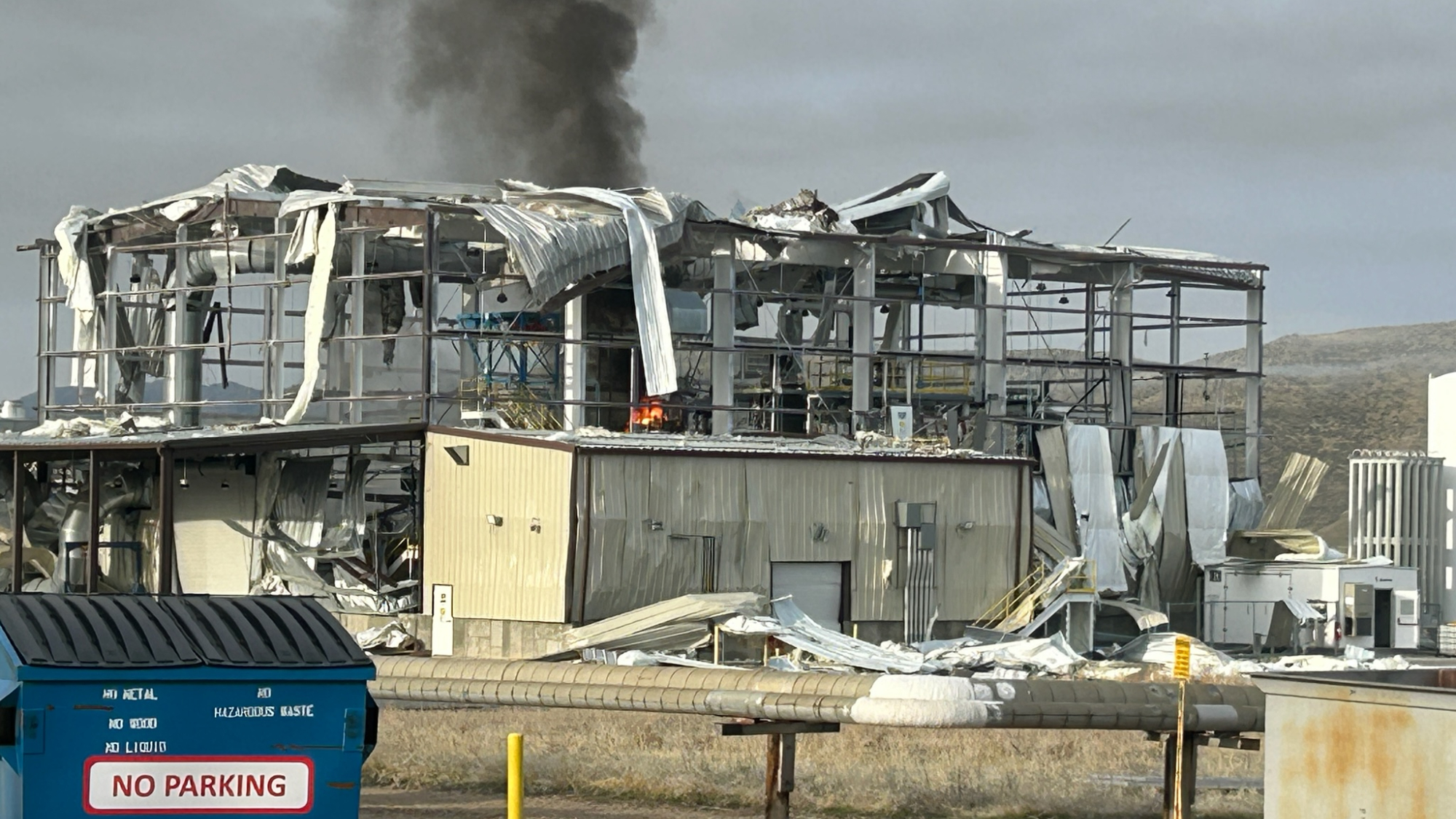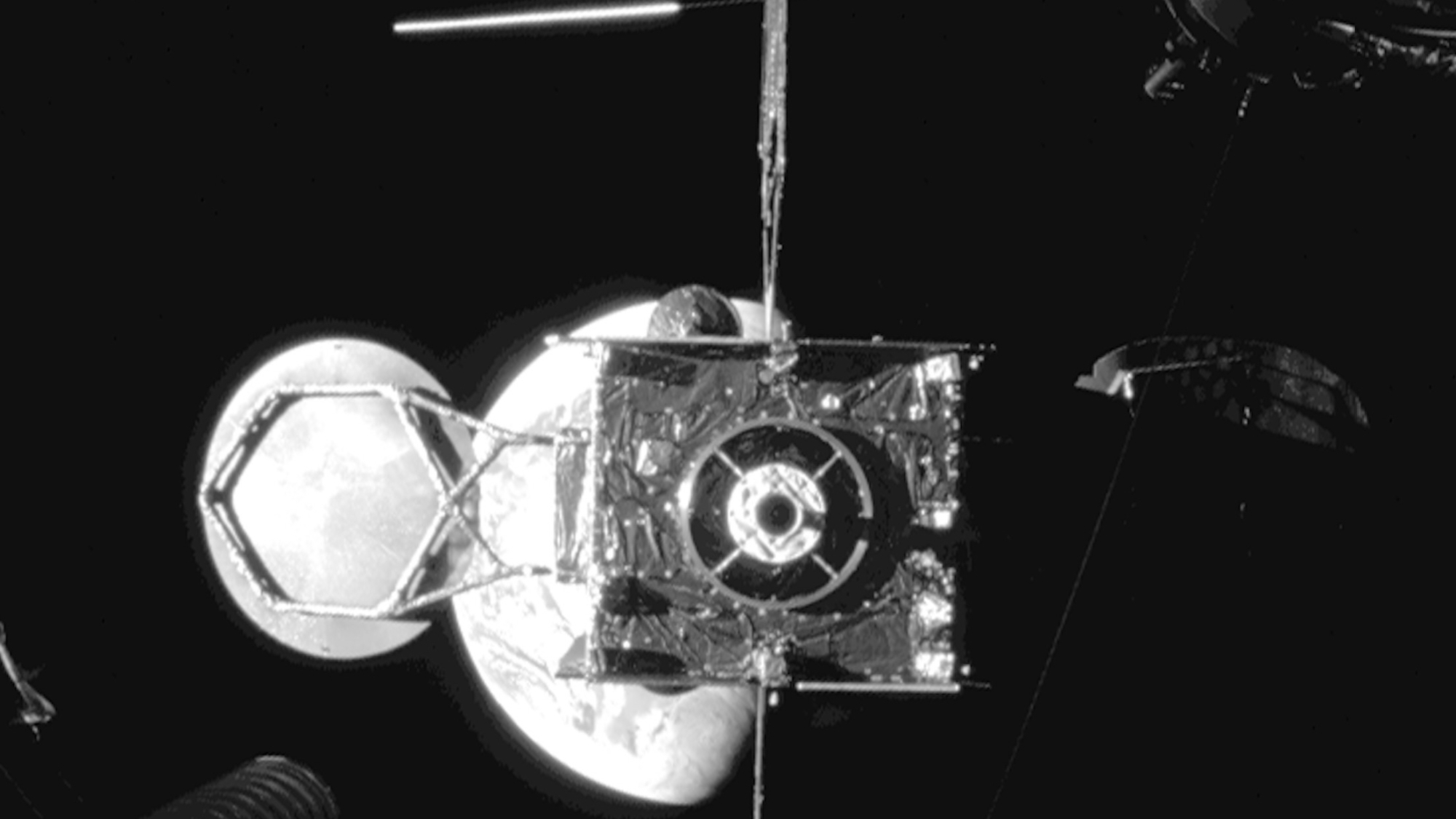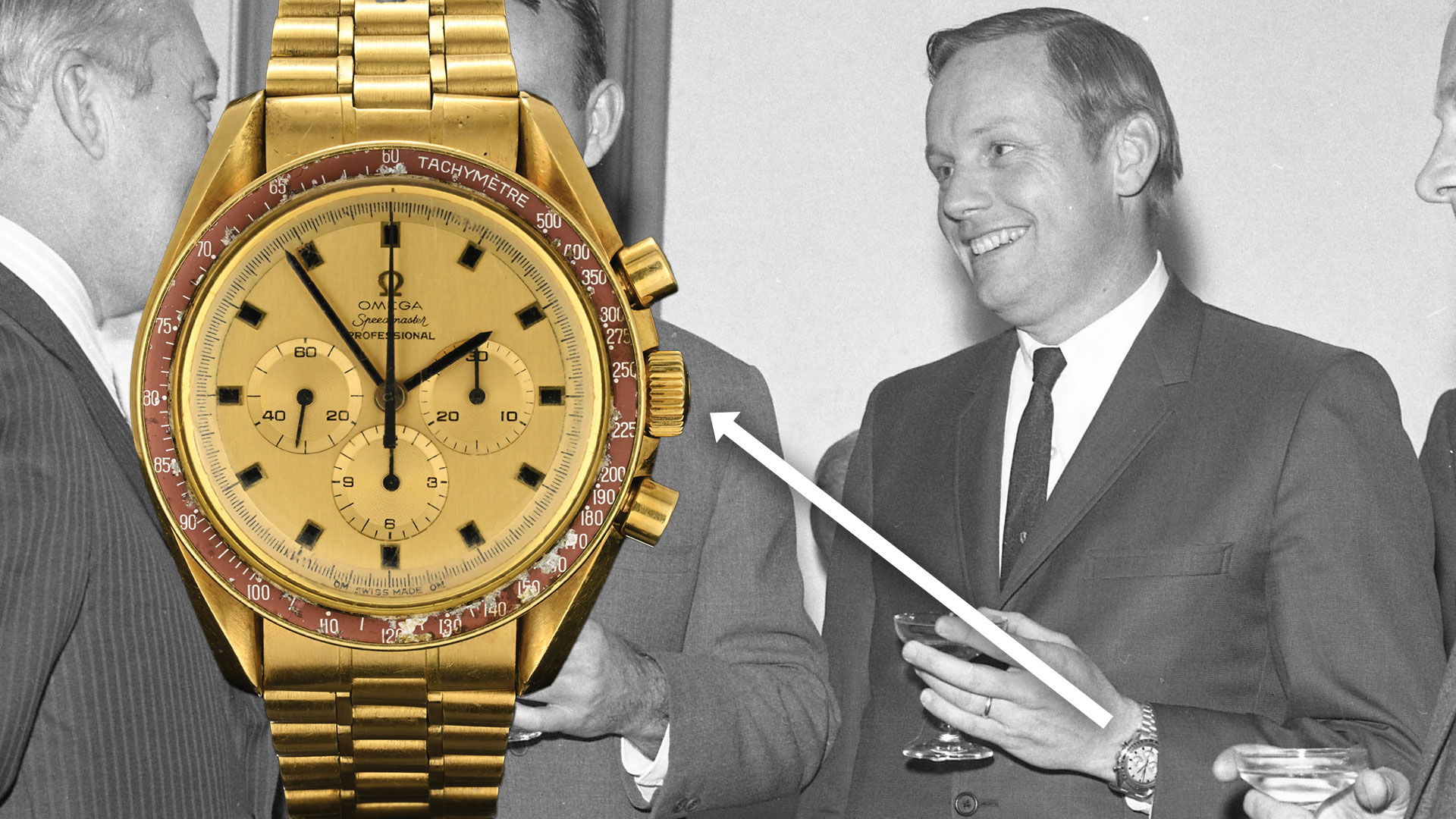Go Centaur! Space Force stands up rocket stage at Los Angeles base
'The Centaur has [been] delivered.'
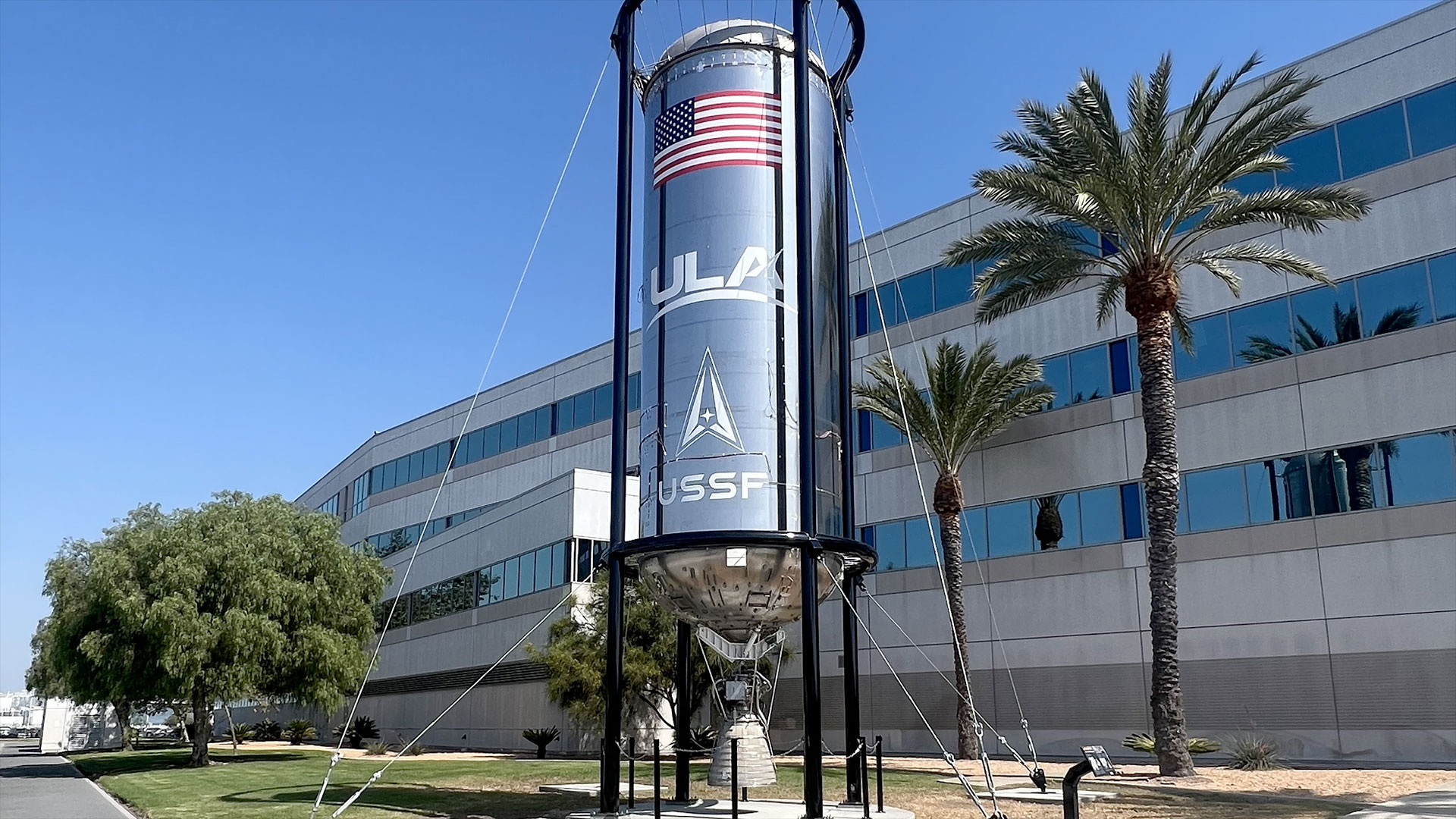
A towering propellant tank and its rocket engine now stand on display at Los Angeles Air Force Base as a testament to its service to both the United States' military and civilian space missions.
The Centaur III upper stage tank and RL-10 engine exhibit was dedicated last month outside the headquarters for Space Systems Command, the U.S. Space Force's division for acquiring and delivering space capabilities. The liquid hydrogen-fueled Centaur, in its various configurations, has been used in almost 300 launches of Earth orbit and interplanetary spacecraft since 1962.
"The Centaur is deeply rooted in our history," said Col. Michelle Idle, deputy commander of Space Systems Command, addressing the audience of more than 100 who attended the Oct. 18 ribbon-cutting ceremony. "It has put many of our capabilities up to orbit. Time and time again, the Centaur has delivered."
The tank and engine were donated by United Launch Alliance (ULA), which provides satellite launch services for the Department of Defense. The hardware was previously used for various testing and research purposes over the course of the Atlas II and Atlas V rocket programs.
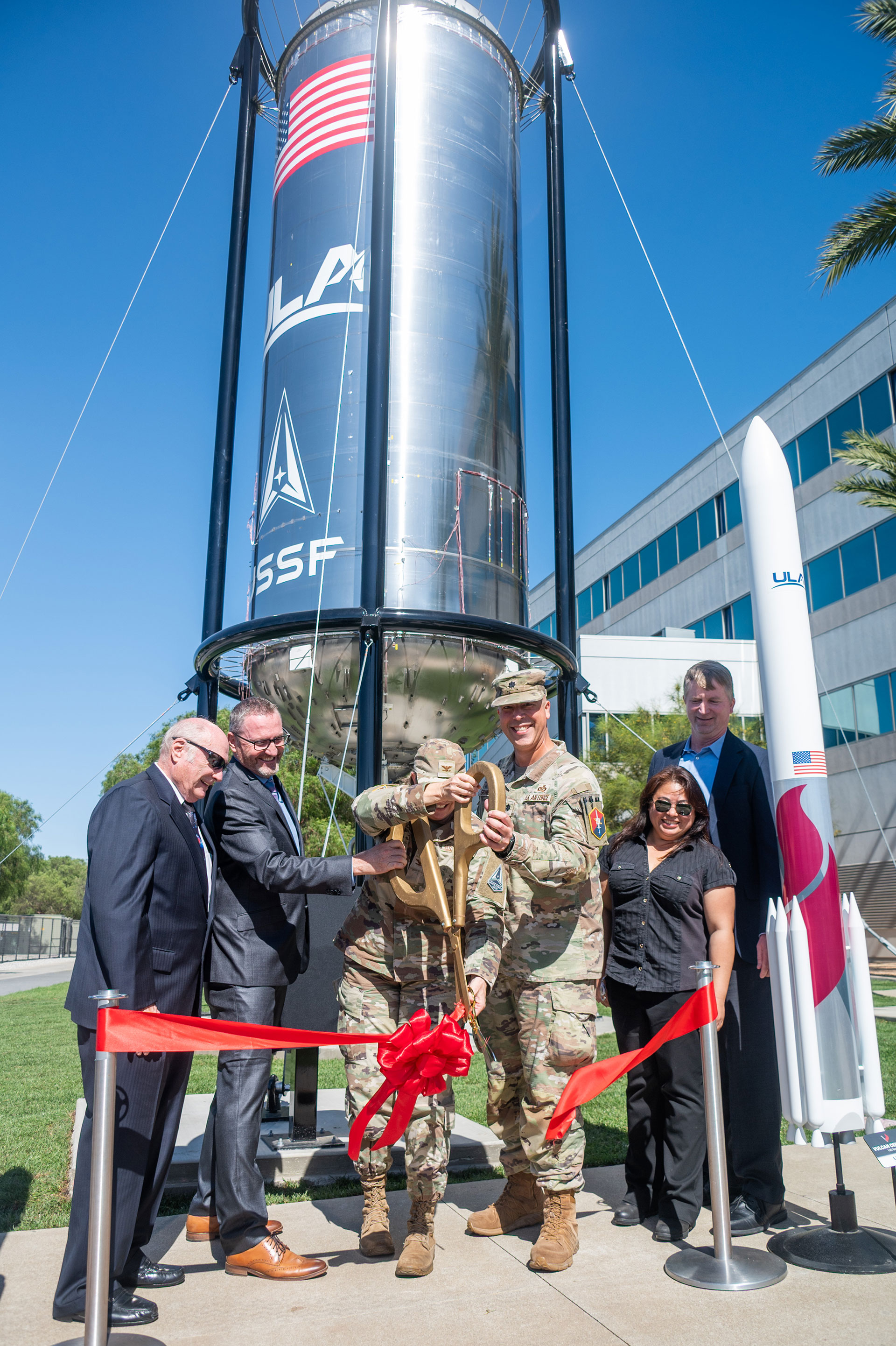
The now-retired hardware was delivered by truck from the Mojave Desert to the base in El Segundo, California on Oct. 5. The exhibit is a result of a multi-year effort by the Space Force, the Air Force, industry partners and the Space Systems Command's Heritage Center, which supports the command's public history and educational activities.
Related: What is the U.S. Space Force and what does it do?
"The Centaur, the RL10, have been pretty much hand-in-glove with [what's now] Space Force since the '60s, getting critical satellites to orbit and still is there, helping us do our job," said retired Air Force Maj. Gen. Thomas Taverney, chairman of the Heritage Center's foundation, according to a Space Force release issued on Monday (Nov. 4). "Centaur's not only been a long-living system that has continuously been updated with new technology, but it's also been a pretty darn reliable system that's operated with a high success rate."
The Centaur was developed by a partnership between the Defense Department, NASA and industry. In addition to launching classified payloads for the military and intelligence agencies, the Centaur has flown on Titan and Atlas family rockets to send probes to study the sun and the planets. A version of the Centaur was developed but never flown on the space shuttle.
In its most recent configuration, the dual-engine Centaur V flies with ULA's new Vulcan heavy-lift launch vehicle.
"Centaur was the first cryogenic upper stage featuring hydrogen and liquid oxygen, so that we could fly longer, more intense and higher-energy missions," said Marcus Nichols, a former Air Force officer who served at Los Angeles AFB and who currently works as ULA's senior manager in southern California. "We've evolved that over time to make it the most capable high-energy upper stage in the business, servicing national defense and powering missions to every planet in the solar system — and Pluto."
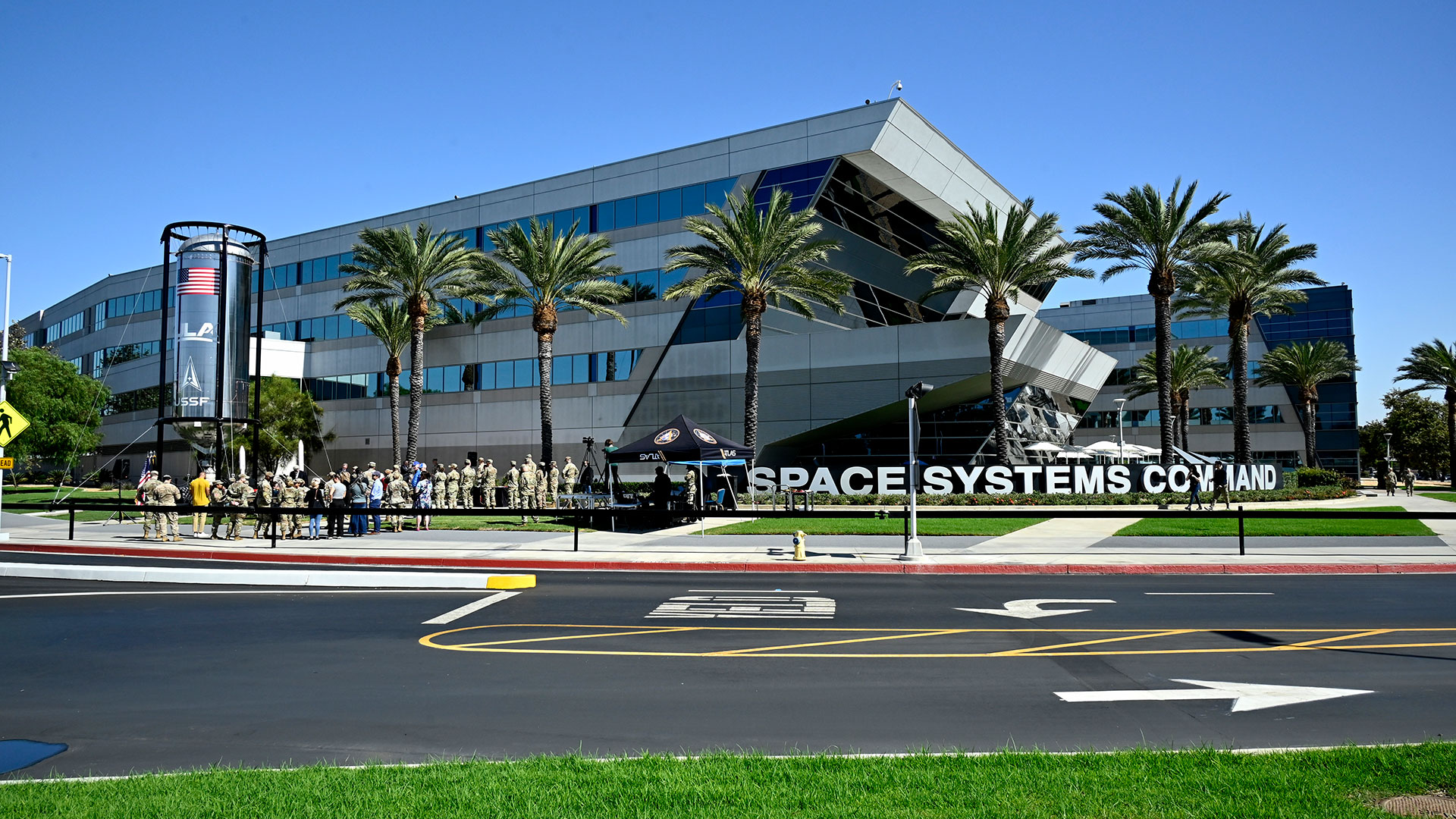
The Centaur III and RL-10 exhibit is located beyond the security perimeter of Los Angeles Air Force Base, restricting public access. Other Centaur stages on display include a Centaur II at the Wings Over the Rockies Air & Space Museum in Denver and Centaur G Prime (or Shuttle-Centaur) at NASA's Glenn Research Center in Cleveland.
"The Centaur, also known as America's workhorse in space, services as an engineering marvel, representing decades of innovation and achievement in aerospace technology," said Lt. Col. Sean Granier, 61st Civil Engineer and Logistics Squadron commander and host of the dedication ceremony. "Space is not just the final frontier; it is a realm where our dreams take flight and where teamwork, across disciplines, leads to groundbreaking discoveries."
Follow collectSPACE.com on Facebook and on X at @collectSPACE. Copyright 2024 collectSPACE.com. All rights reserved.
Get the Space.com Newsletter
Breaking space news, the latest updates on rocket launches, skywatching events and more!
Join our Space Forums to keep talking space on the latest missions, night sky and more! And if you have a news tip, correction or comment, let us know at: community@space.com.

Robert Pearlman is a space historian, journalist and the founder and editor of collectSPACE.com, a daily news publication and community devoted to space history with a particular focus on how and where space exploration intersects with pop culture. Pearlman is also a contributing writer for Space.com and co-author of "Space Stations: The Art, Science, and Reality of Working in Space” published by Smithsonian Books in 2018.In 2009, he was inducted into the U.S. Space Camp Hall of Fame in Huntsville, Alabama. In 2021, he was honored by the American Astronautical Society with the Ordway Award for Sustained Excellence in Spaceflight History. In 2023, the National Space Club Florida Committee recognized Pearlman with the Kolcum News and Communications Award for excellence in telling the space story along the Space Coast and throughout the world.


